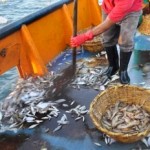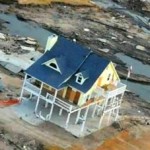
Bergen, Norway – Global environment organisation WWF has today awarded its highest accolades – Gift to the Earth Awards – to two leading regional ocean management organisations that have been instrumental in establishing protected areas on the high seas.
WWF International Conservation Director Lasse Gustavsson handed over the awards at the close of the Ministerial Meeting of one of the recipients, the Oslo-Paris (OSPAR) Commission for the Protection of the Marine Environment of the North-East Atlantic in Bergen, Norway.
Attending the meeting as observers were representatives of the other recipient, the Commission for the Conservation of Antarctic Living Resources (CCAMLR). The awards recognise significant achievement in establishing marine protected areas (MPAs) over areas of the high seas in the North-East Atlantic and Southern Ocean respectively.
“Protection of the high seas is really the poor cousin of the well-behind schedule, well behind target international agreement to establish the levels of protection necessary to protect the world’s biodiversity,” said Gustavsson. “For land, the level of protected areas amounts to more than 10%, for marine areas within national jurisdiction it is behind that at less than 1%, but on the high seas the level of protection until very recently was just zero.”
“In the Southern Ocean, CCAMLR is awarded for its commitment to delivering a representative network of marine protected areas throughout the Southern Ocean by 2012. To achieve this objective, CCAMLR has agreed to a concrete step by step work plan and the South Orkneys MPA, the first high seas MPA, representing the first component of the Southern Ocean MPA network, was adopted in November 2009.”
“In the North-East Atlantic, we celebrate OSPAR’s role in the establishment of the first suite of high seas MPAs, including four sea-mount protected areas as well as two large sections of the Mid-Atlantic Ridge, a stunning and ecologically underwater mountain range.”
WWF noted that the North East Atlantic proposal involved a unique collaboration between single coastal states, OSPAR and other intergovernmental bodies that is setting an important precedent and lesson to be shared with other regional seas – demonstrating it is possible to identify priority areas on the high seas, set conservation objectives and generate the political will for the management of human activities in parts of the oceans “far out and deep under”.
The establishment of the high seas MPAs in the North-East Atlantic has been under consideration by OSPAR for four years, with some contracting parties entering last minute reservations due to concerns over their rights to use the seabed.
“We are happy that these reservations finally could be lifted but WWF regrets that full protection of the biologically diverse Charlie-Gibbs Fracture Zone to the north of the Mid-Atlantic Ridge was postponed until 2012,” said Stephan Lutter, WWF-Germany’s Marine Protected Area expert and spokesperson to OSPAR.
The North-East Atlantic is rich in marine wildlife, including cetaceans, sharks and rays, orange roughy and other deepwater fish, and vulnerable marine ecosystems such as cold-water coral reefs, coral gardens, sponge aggregations, seamounts and hydrothermal vent fields, many of which have been identified as threatened and declining due to high fishing pressure and impacts from other human activities.
The Southern Ocean is the one of the last great wildernesses on earth. Isolated by ice, wind and wild seas, it is one of the world’s most pristine environments. What appears at first glance to be a relatively simple, cold and inhospitable ecosystem is in fact a region of spectacular natural beauty that is home to an outstanding diversity and productivity of wildlife. The unexpected beauty of the Southern Ocean is now recognised as supporting some of the most biologically productive regions of the world’s oceans.
“Coherent and ecologically representative networks of high seas marine protected areas (MPAs) are an important tool for protecting the rich and often vulnerable biodiversity of the 70% of our oceans that lie beyond national jurisdiction,” said Lutter
Notes:
The Gifts to the Earth awards will be handed to Dr. David Johnson and Dr. Henning von Nordheim for OSPAR and Dr. Denzil Miller for CCAMLR.
About WWF
WWF is one of the world’s largest and most respected independent conservation organizations, with more than 5 million supporters and a global network active in over 100 countries. WWF’s mission is to stop the degradation of the earth’s natural environment and to build a future in which humans live in harmony with nature, by conserving the world’s biological diversity, ensuring that the use of renewable natural resources is sustainable, and promoting the reduction of pollution and wasteful consumption. For more information, visit www.panda.org.
Source: WWF Press Release dated September 24, 2010.












